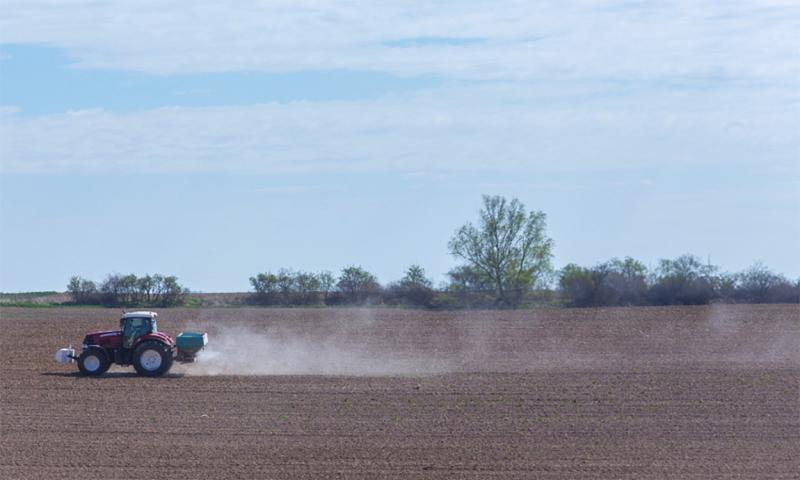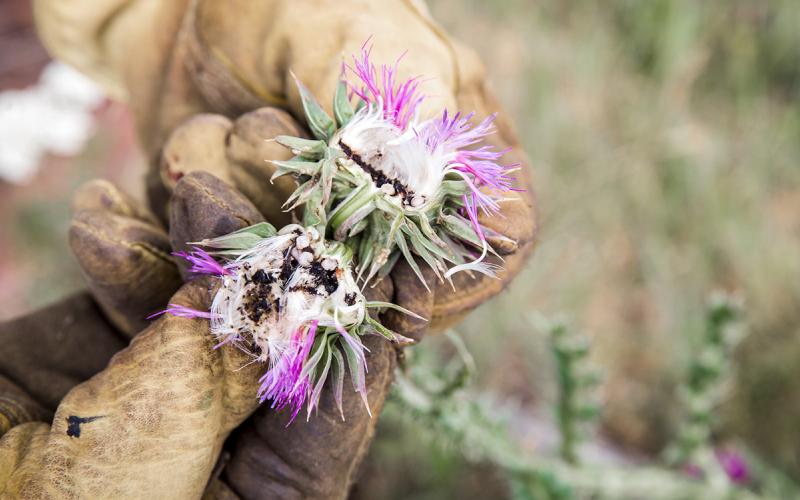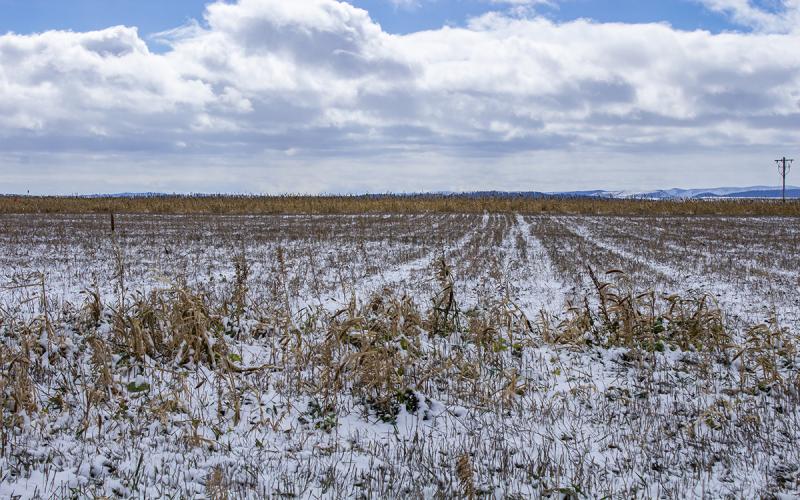Written collaboratively by Eric Jones, Philip Rozeboom, Jill Alms, and David Vos.
Preemergence herbicides (also known as residual herbicides) require precipitation (generally 0.5 to 1 inches) to move the herbicide into the soil layer where the weed seedlings are germinating. The precipitation event should occur within 3 days of application, or the weed seedlings can emerge, and the herbicide is no longer effective, as many residual herbicides do not kill emerged plants.
Aside from the 2024 growing season, many parts of South Dakota can realize dry conditions when a residual herbicide is applied, which can result in inadequate weed control. Therefore, in these drier areas, residual herbicides can be applied in the fall to take advantage of snow melt and a longer period to receive the 0.5 to 1 inches of activating precipitation. A fall-applied residual herbicide can help manage early emerging weeds that may be too wet to spray in spring from snowmelt.
Residual Herbicide Selection

Before applying any residual herbicide, consider what will be planted in that field for the next growing season, as there could be a rotation restriction that limits what crops can be planted. The most fall-applied residual herbicide in South Dakota is flumioxazin (Valor, Panther, others [Herbicide group 14]). Flumioxazin is one of most-effective residual herbicides available for kochia and waterhemp and has a relatively short rotational restriction depending on the rate applied. While the herbicide is very effective, a lot of reliance is placed not only on this particular active ingredient, but also the herbicides belonging to Group 14 as well (sulfentrazone [Spartan, Authority products], fomesafen [Flexstar], lactofen [Cobra], others). While no resistance to these herbicides have been confirmed in South Dakota, there is flumioxazin-resistant and Group 14-resistant kochia in North Dakota and resistant waterhemp in surrounding states (including Iowa and Nebraska).
While not as effective as flumioxazin, there are other residual herbicides that can be applied in the fall. The Group 3 herbicides (also known as the “yellows”) can be applied in the fall; herbicides include trifluralin (Treflan) and pendimethalin (Prowl, Satellite, others). The Group 3 herbicides are more effective on grass weeds compared to broadleaf weeds. Usually, the Group 3 herbicides are applied before a broadleaf crop (such as soybean or sunflower). Atrazine (herbicide Group 5) can be applied in the fall before a corn or sorghum crop. However, check the soil pH in fields to be treated before applying atrazine, or carryover to later-planted crops can occur. Atrazine is more effective on broadleaf weeds than grass weeds. The Group 15 herbicides are an option as well; this herbicide group includes S-metolachlor (Dual Magnum) and pyroxasulfone (Zidua). While acetochlor (Harness, Warrant) and dimethenamid (Outlook) belong to Group 15, these herbicides are not recommended, as minimal precipitation (0.25 to 0.5 inches) is needed for movement within the soil profile, and it could be washed away from where the weed seeds are before germination. The Group 15 herbicides are effective on grass weeds and small-seeded broadleaf weeds. Similar to other herbicide applications and programs, multiple herbicide groups should be included in the fall application to reduce selection pressure on resistant weeds and increase the spectrum of weed control.
Application Considerations

While a residual herbicide applied in the fall will likely be beneficial, there are some constraints to make the application successful. Most herbicide labels require the application be made in October but not to frozen soil. The timing of crop harvest and weather conditions can make a timely application difficult. If there is a particular field that has weed issues, try to harvest that field first, so the residual herbicide can be correctly applied.
Winter annual and some perennial weeds can be present when the residual herbicide is applied in the fall. Include herbicides that have foliar activity to manage the emerged weeds to minimize early season competition with the crop, seed production, and pests that use these plants as a secondary host (such as soybean cyst nematode utilizing field pennycress as a host). The postemergence herbicides should be applied to weeds after a light frost. If a hard frost occurs before the application, wait 24 to 48 hours to determine if the plant vegetation will die. If leaves become necrotic (exhibiting brown, dead lesions) and wilted foliage, then do not spray, as the herbicide will not be absorbed or translocate throughout the plant. If the leaves remain green, proceed to spray, as long as conditions remain approximately 50 degrees during the daytime for several days.
Before selecting herbicides to apply, consult the respective labels and latest SDSU Extension Pest Management Guides for a complete list of herbicides and usage.


